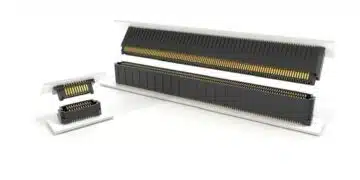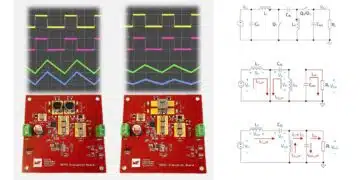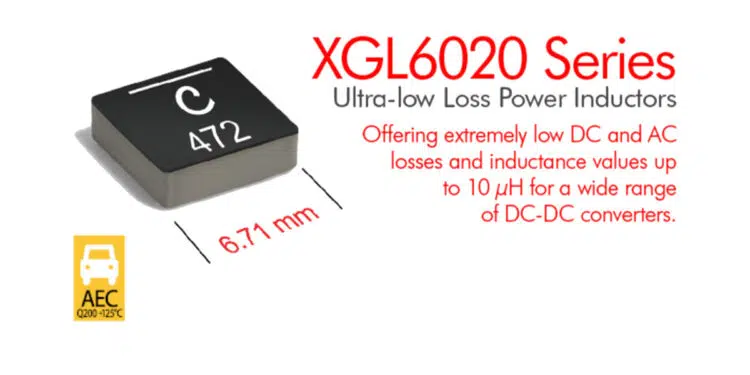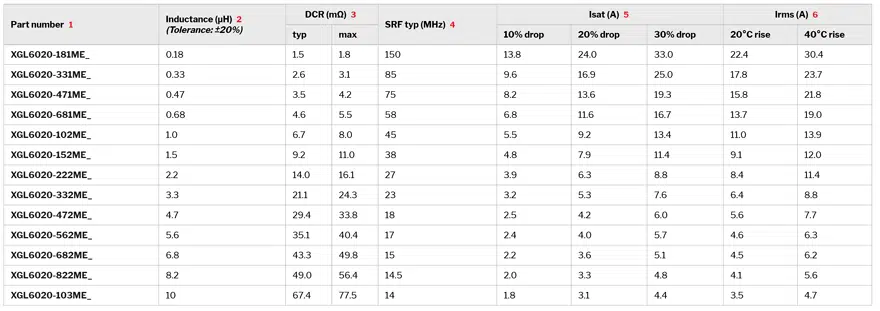Coilcraft’s new XGL6020 series of low-profile ultra low loss SMD molded power inductors reduce DCR by more than 40%.
GL6020 molded power inductors offer Coilcraft’s lowest DC losses and extremely low AC losses for a wide range of DC-DC converters. Additional performance benefits include a wider range of inductance values and improved Irms current ratings.
Features
- Industry’s lowest DCR and ultra low AC losses over a wide frequency range
- Superior current handling with soft saturation characteristics
- AEC-Q200 Grade 1 (−40°C to +125°C)
- Wide inductance range from 0.18 µH to 10 µH
- RoHS-compliant, halogen-free. 260°C compatible. Tin-silver (96.5/3.5) over copper terminations
- COTS Plus tin-silver-copper and tin-lead terminations available
Specifications
Electrical specifications at 25°C. Operating voltage 0 – 80 V
Notes:
- When ordering, please specify termination and packaging codes: e.g. XGL6020-103MEC
- Inductance tested at 1 MHz, 0.1 Vrms, 0 Adc.
- DCR measured at 25°C on a micro-ohmmeter. For other operating temperatures, use this DCR at Temperature calculator.
- SRF measured using an Agilent/HP 4395A or equivalent.
- Isat: DC current at 25°C that causes the specified inductance drop from its value without current.
- Irms: Current that causes the specified temperature rise from 25°C ambient. This information is for reference only and does not represent absolute maximum ratings.
Irms testing was performed on 0.75 inch wide × 0.25 inch thick copper traces in still air. Temperature rise is highly dependent on many factors including pcb land pattern, trace size, and proximity to other components. Therefore temperature rise should be verified in application conditions.
Source:
Coilcraft


































